June 6, 2019
Flashy Plants, Romance, Caterpillars, Fungal Disease
Icy drinks, cool swims, and sizzling grills mean that summertime’s here for sure. Pop hot color into outdoor “livin’ is easy” with Casey Aicklen from Barton Springs Nursery with flashy plants for splashy summer!
Along with natives to attract pollinators, she brings along a new-to-me Lespedeza ‘Little Volcano’. A deciduous deer-resistant shrub, it attracts countless pollinators and hummingbirds on its summer-to-fall pink and purple flowers.
Plant in full sun and well-drained soil. Root-hardy in winter, top growth dies back, so cut back in late winter for quick rebound. It can get 6’ tall and 12’ wide, but you can control size with trimming.
Punch in container color with mandevilla and Datura ‘Ballerina Purple’, both annuals for us unless winter-protected, but so worth it for months of color!
Datura practically glows at night, attracting us and pollinating moths.
And, get Casey’s tips for keeping bougainvillea blooming and how to deal with caterpillars on cannas, like the Canna CANNOVA® series for foliar drama to 3-4’ and luscious, rich colors.
Note: the caterpillars are the larvae of a skipper butterfly. Watch now!
The caterpillar you spot today may look quite different tomorrow. Daphne grabbed shots of Black Swallowtail butterfly larvae chomping on the fennel at the Travis County Extension demonstration garden. This is a young Black Swallowtail butterfly caterpillar.
Caterpillars go through several growth stages—instars—on the way to adulthood when they pupate and eventually emerge as butterflies (or moths).
One moth caterpillar we’re seeing a lot now is the Genista Broom moth caterpillar on mountain laurel. John Shearer and Randy Sabbagh spotted several instars on their silver one.
You can use Bt (Bacillus thurigiensis) to control caterpillars you can’t hand pick, but there’s the rub! You don’t want to wipe out every butterfly or moth out there. But in the case of mountain laurels, an infestation can do serious damage and remove next year’s flowers. Watch now!
Here’s the most convincing reason to love those caterpillars: Cody the Caterpillar! Written and illustrated by third-grader Atlie M., who plans to be an entomologist, her beautiful story won 2nd place in the delightful, annual KLRU KIDS Writers contest.

I love Cody already! I would never hurt good old Cody. Read Atlie’s charming story to find out what happens. Indeed, she’ll be a great entomologist as well as an author! And read all the other talented young authors—you’ll love every story.
So, do you have plants that look like this sad penta? Blame pythium root rot, a result of recent rains.
John shows the difference between fungal disease and insect damage.
Here you’ve got fungal disease on tomatoes, rose chafer beetle damage, and sooty mold, a fungus that grows on the honeydew excreted by aphids and other sucking insects. Watch now!
By the way, Randy Thompson from Sunshine Community Gardens told me that early blight has really hit tomatoes this year after all the rain. Some gardeners use Serenade fungicide (that John’s mentioned) as a foliar spray.

AND: Sunshine Community Garden’s hosting their famous tomato tasting this Saturday, June 8 at 9 a.m., so head on over to test your tomatoes, vote on your favorites, and get their tomato growing tips.

On tour in rocky Cedar Park, Robert Jennings re-created a honeymoon paradise every day for wife Deborah and their daughter Calli Avery-Faith Jennings.
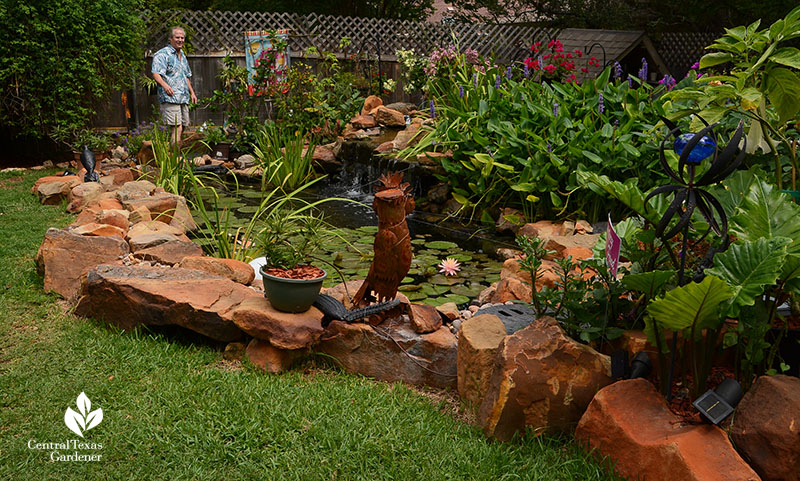

When they moved from Lubbock to Austin, Robert chiseled into rock to re-create the color and romance of their Hawaiian honeymoon.

Starting from weeds and basically nothing, he layered color and privacy breaks with heirloom plants like althea, natives like Texas Star hibiscus, lantana, Tecoma stans, and other seasonally flowering perennials and annuals.

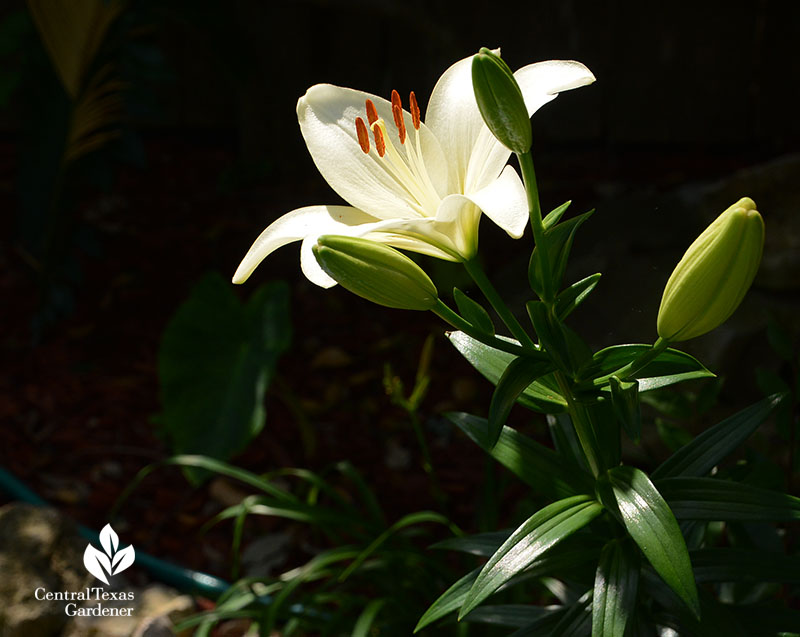
They couldn’t recreate the Pacific Ocean, but Hill Country Water Gardens and Nursery added the romance of water in a multi-level pond.
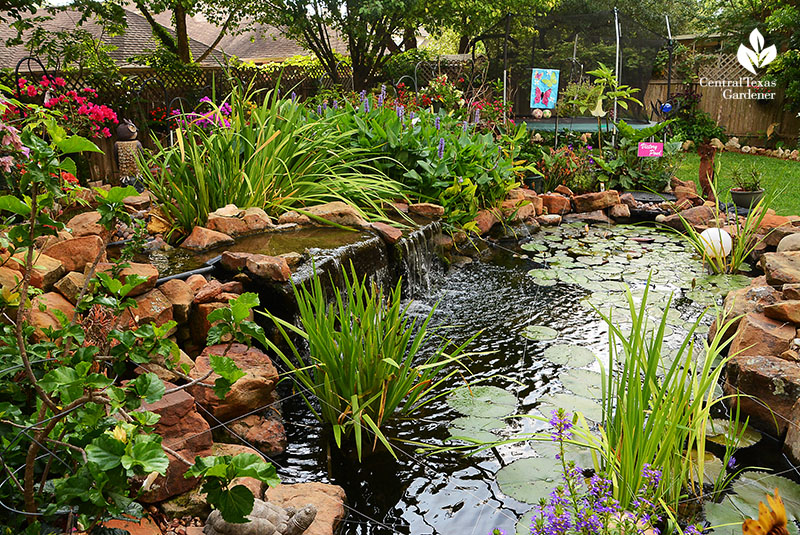
Robert’s back was happy to let them deal with the bedrock for a pond deep enough for koi. Pond plants, including native pickerelweed, attract lots of wildlife, as do the hanging basket bougainvilleas.
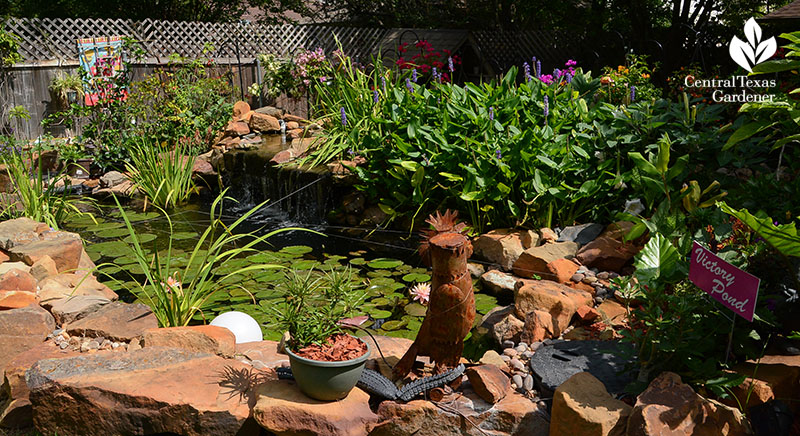
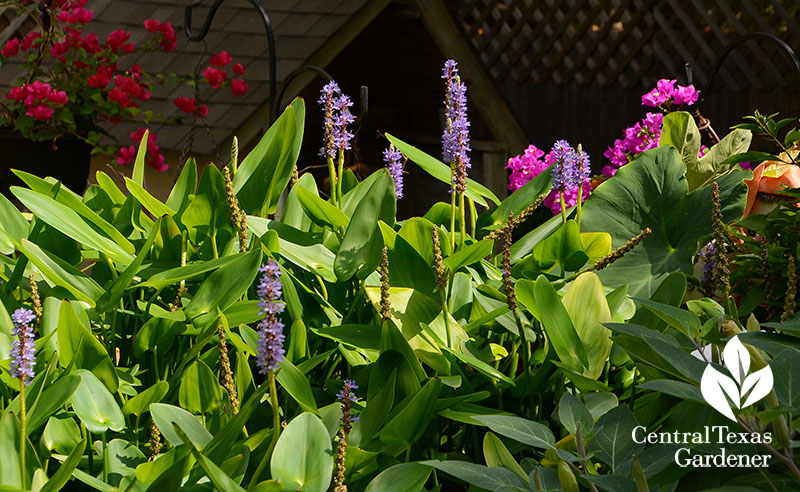
Perennial Salvia guaranitica ‘Black and Blue’ frames the pond amidst a flurry of bees, butterflies, and hummingbirds.

For all the wildlife they want, heron are no friends to their koi, all named and quite members of the family. Robert rigged up a string barrier that seems to deter them.
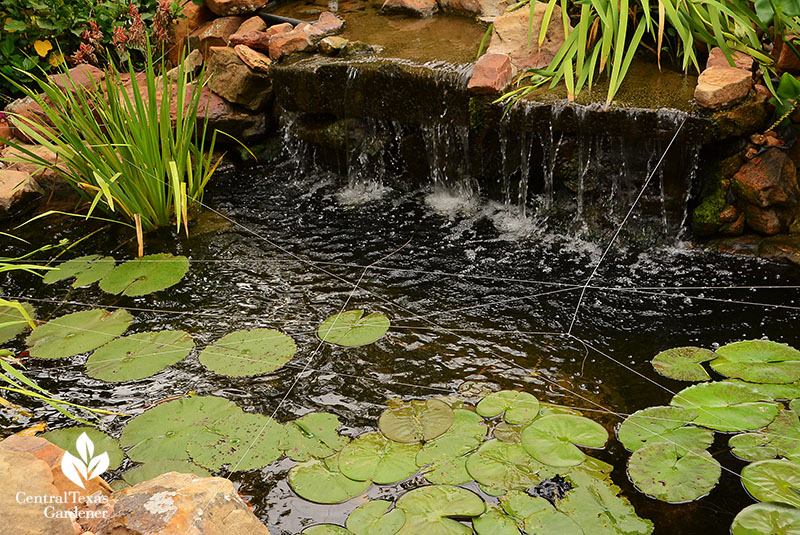
Encircling lawn invites a stroll around the pond and Robert’s bordering beds.

For film talent, model (and student) daughter Calli Avery-Faith Jennings, it’s runaround time with their rescued dogs, sparing plants that don’t go for pup frolics.

Robert uses every vertical spot to grow all kinds of vines. A sentimental one is a grape he propagated from his mother’s in Lubbock, one that her grandmother brought from Germany.
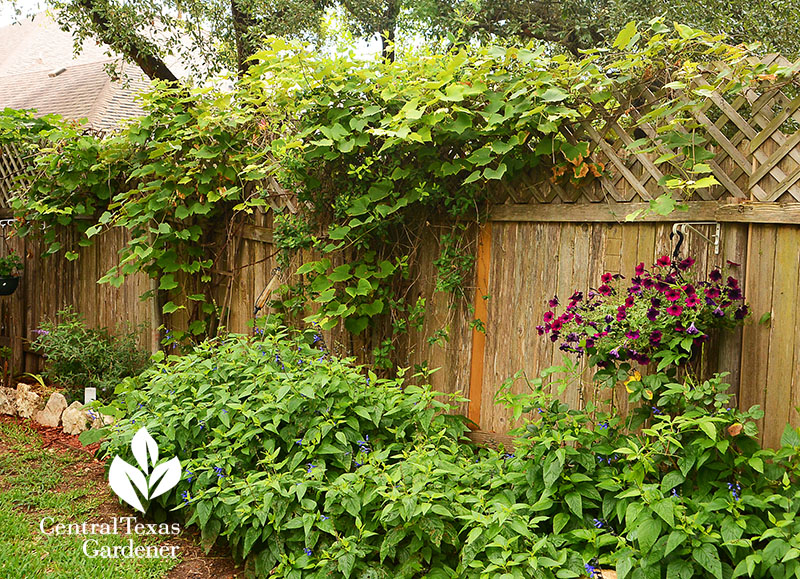
Summer-blooming mandevillas climb up supports on the covered patio to shade it even more when the heat’s on. Always, it’s a family favorite hangout to watch the wildlife.
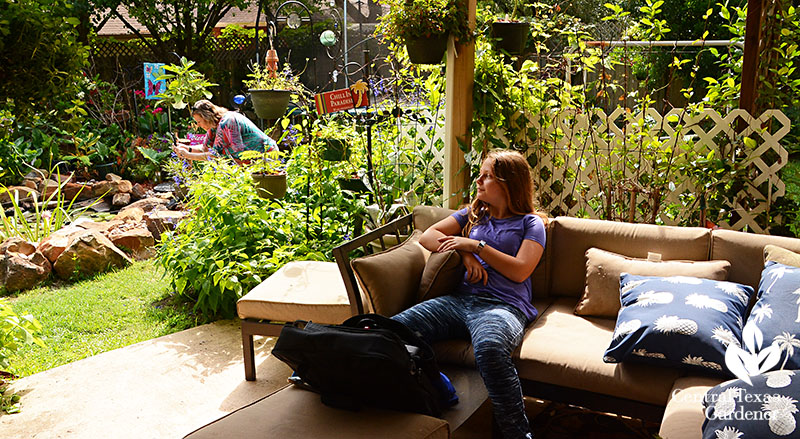
Like all families these days, the Jennings are always on the run. They head to the garden to slow down, discover, and revel in plain old fun.
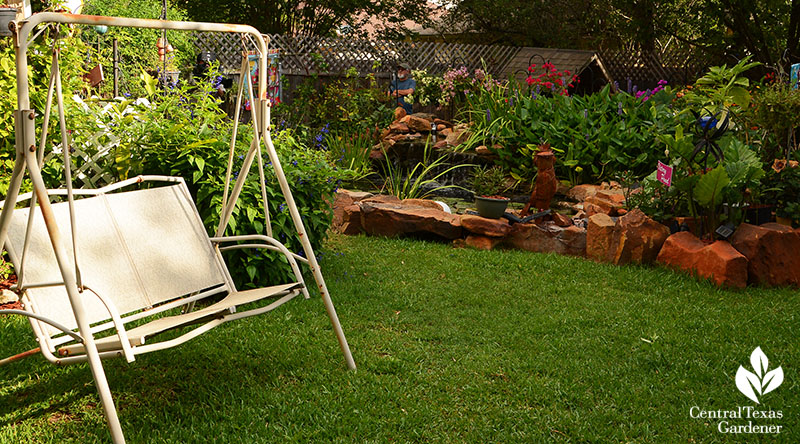
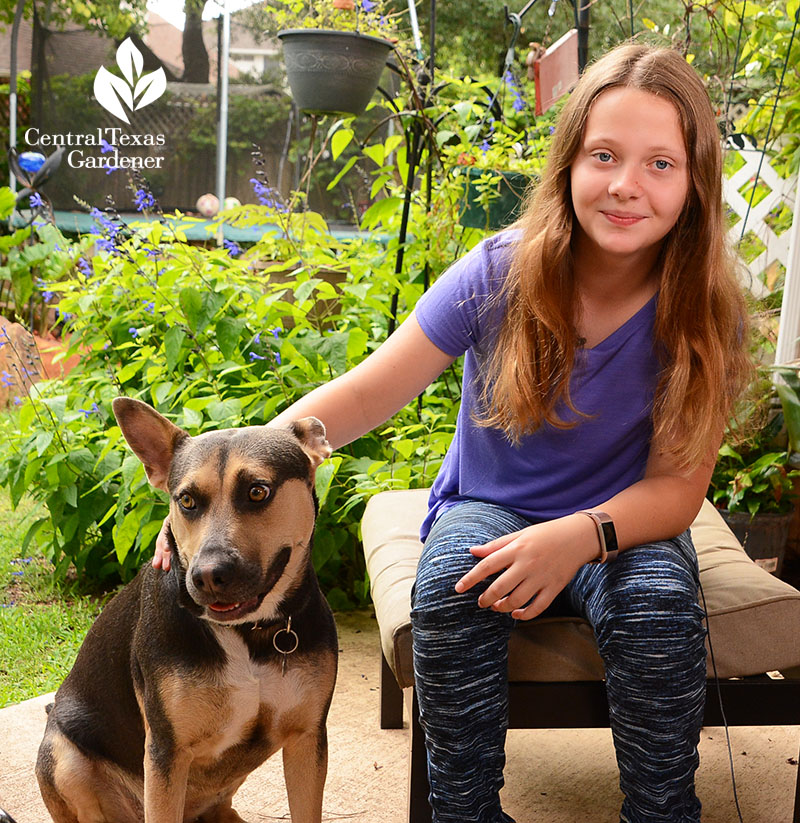
Calli and Shadow Betty invite you watch their story now!
Thanks for stopping by! See you next week, Linda

